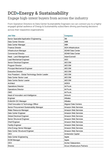Geothermal power could be key to supporting the surge in AI data center demand, think tank Rhodium Group claims.
Depending on where the data centers are located, researchers believe that the vast majority of power needs could be met by a dramatic build-out of behind-the-meter geothermal power.
There is currently around 4GW of nameplate capacity from geothermal power plants in the US, primarily in California and Nevada. That is nearly all from conventional hydrothermal systems, which require very specific subsurface conditions.
Newer approaches, which dig deeper, or involve hydraulic fracturing and horizontal drilling, can be explored in far more locations.
This, Rhodium researchers Ben King, Wilson Ricks, Nathan Pastorek, and John Larsen argue, could mean geothermal projects are feasible near data centers.
By going behind-the-meter, companies could avoid the grid connection delays currently plaguing most power projects.
Rhodium primarily used data center demand projections from the Lawrence Berkeley National Laboratory to forecast how much power consumption would be expected. The researchers also looked at whether data centers will be clustered, as in the pre-AI era, or will continue to spread out in search of power, as seen currently.
"When we assume that data center siting follows a similar pattern as it has in the past, in which large clusters of data centers develop based on proximity to population, available land, and the fiber optic network, we estimate that 55-64 percent of our projected growth at hyperscale facilities could be met with behind-the-meter geothermal, representing 15-17GW of new data center and geothermal capacity," the researchers state.
"Geothermal can meet 100 percent of anticipated data center demand growth in 13 of the 15 largest markets using the most promising cooling approach, and it can meet at least 15 percent of power needs in 20 of 28 markets nationally."
Alternatively, "when data center developers make siting decisions based on using the best-available geothermal resources, as described above in the geothermal-driven and geothermal-plus-fiber-driven siting approaches, we find geothermal could easily meet all projected data center load growth in the early 2030s."
Rhodium also notes that geothermal heat pumps could be used to help cool data centers, reducing the overall electric load.
However, the report cautions that challenges still persist, including permitting, resource rights, lack of subsurface data, supply chains, need for more R&D, and threats to federal incentives.
"This path is far from guaranteed, and data center developers, tech companies, and geothermal developers need to start working today to realize this potential."
Google has a PPA with new geothermal developer Fervo Energy to support its Nevada data centers, while Meta signed a deal with startup Sage Geosystems last year.




